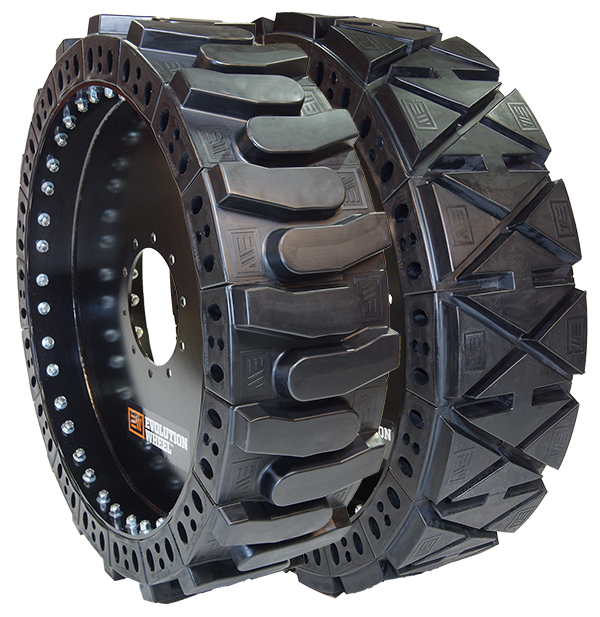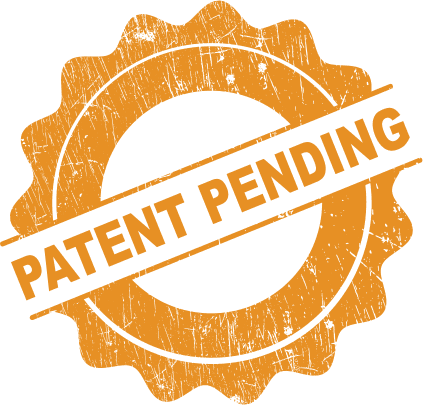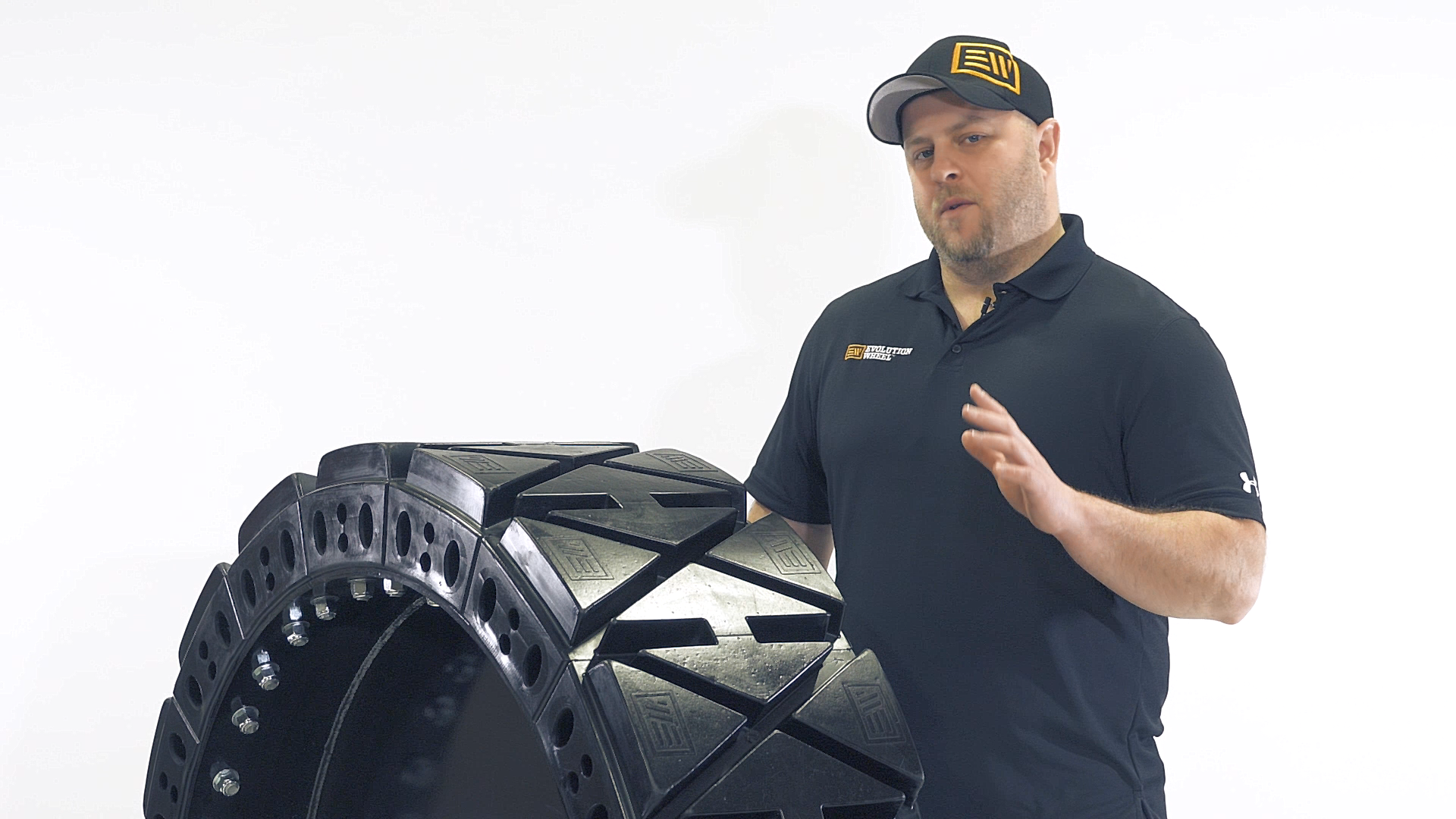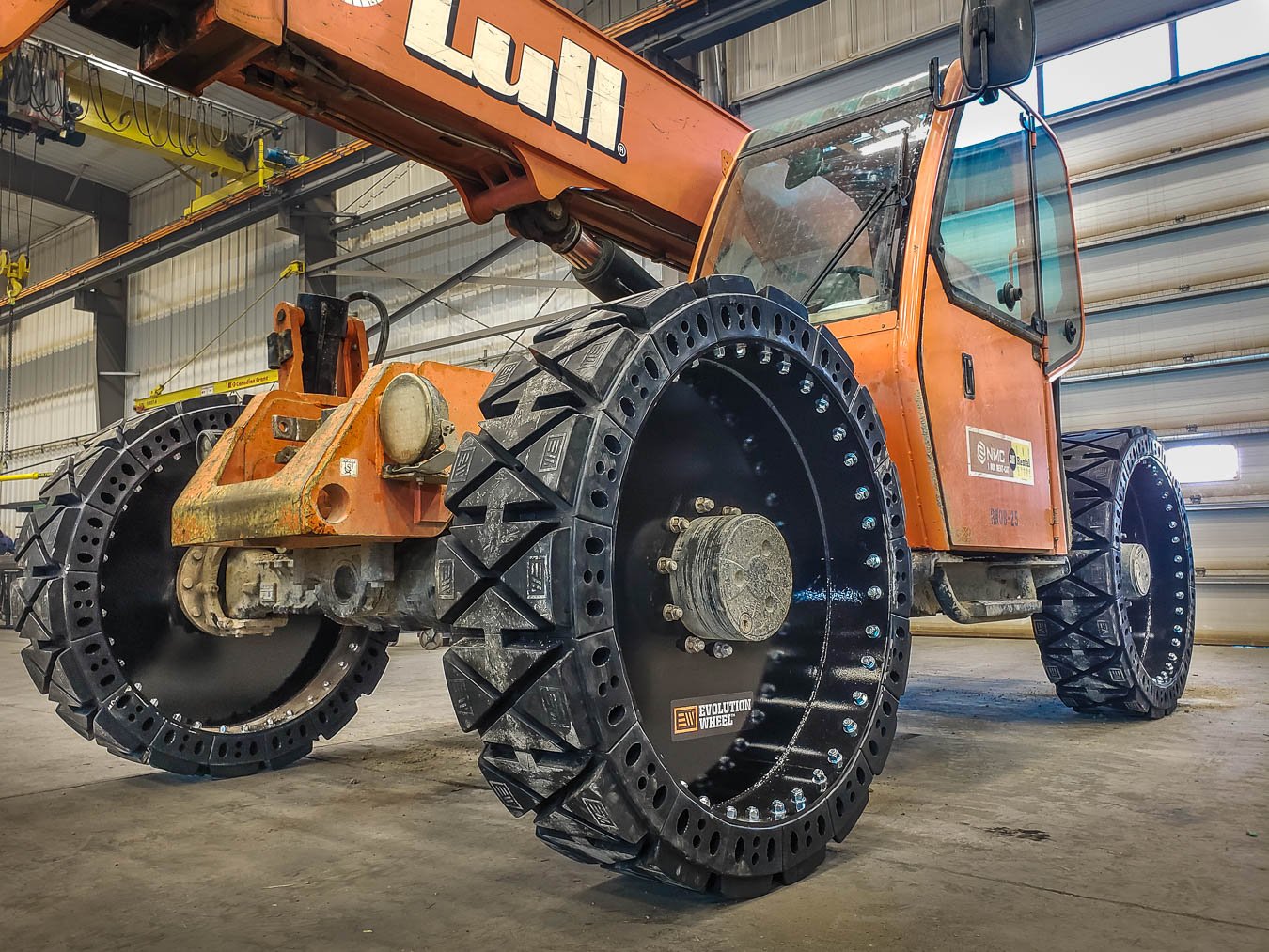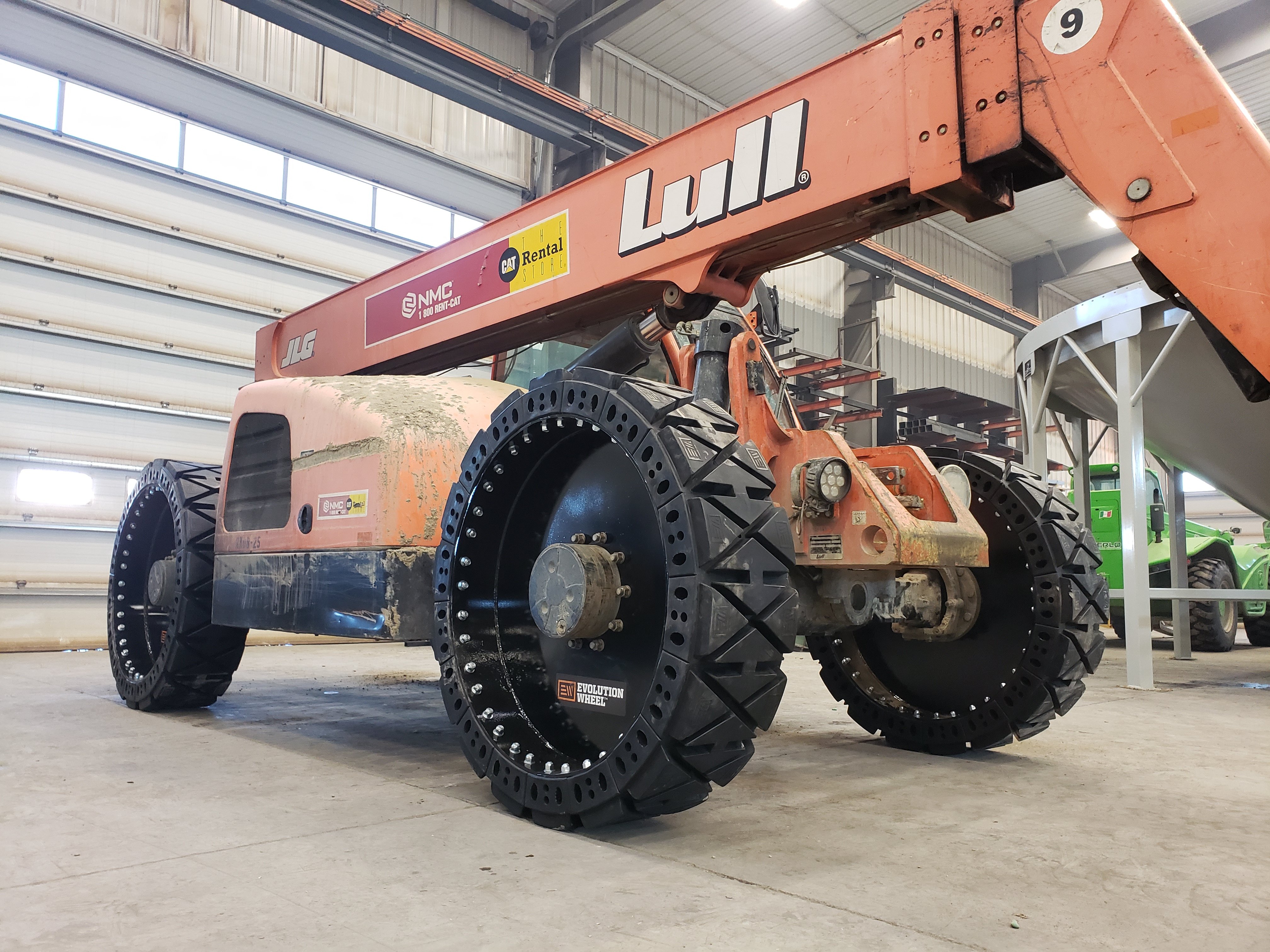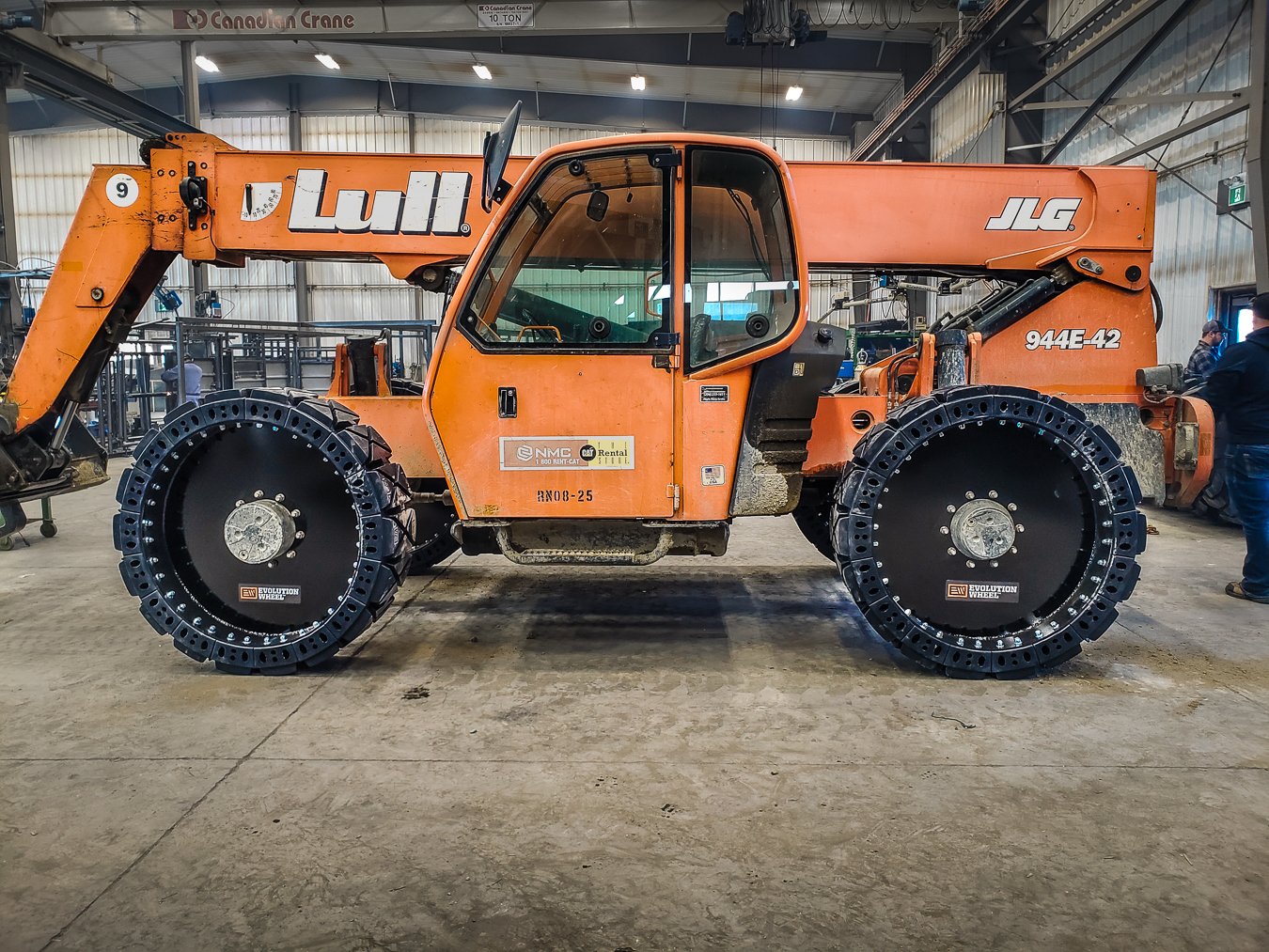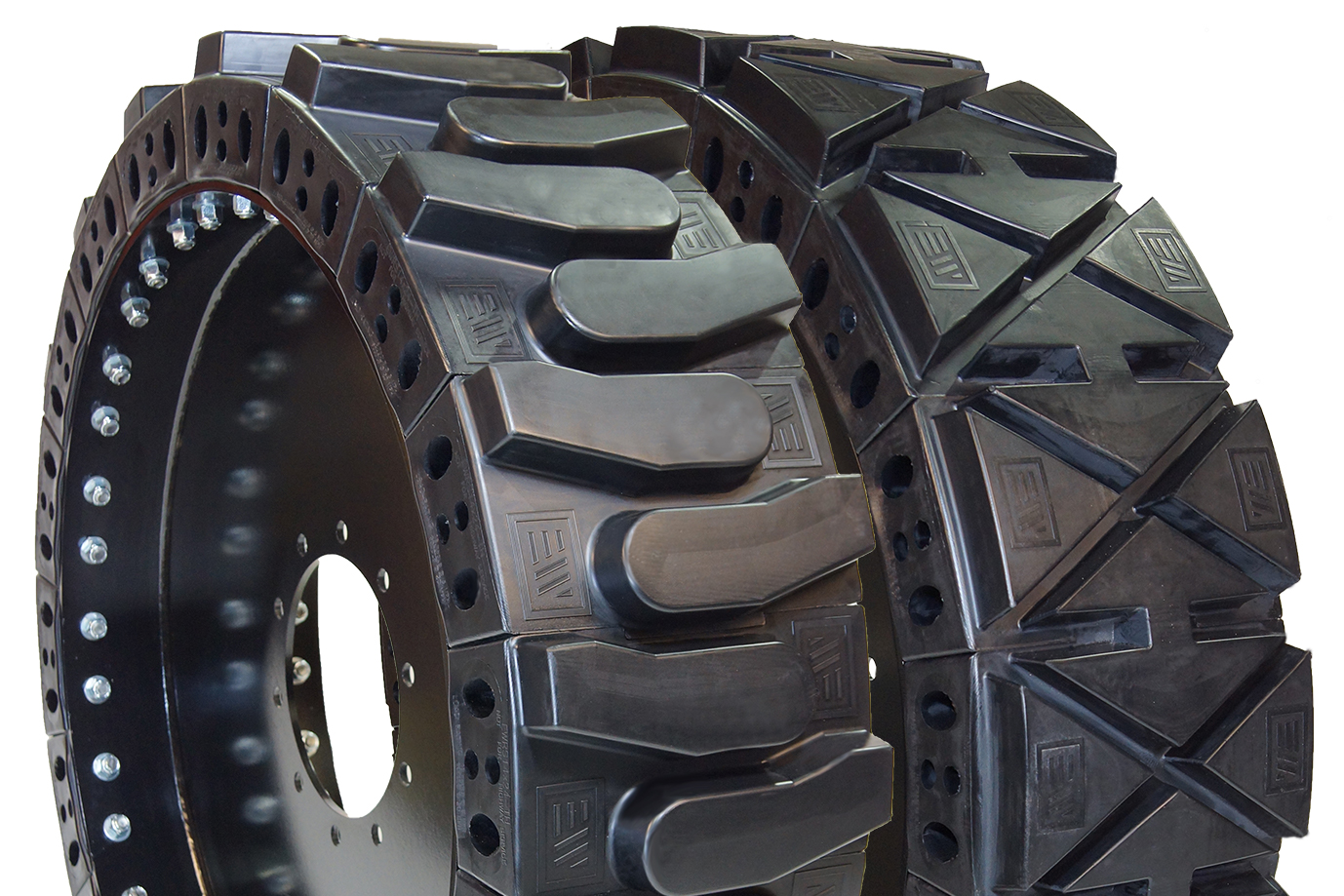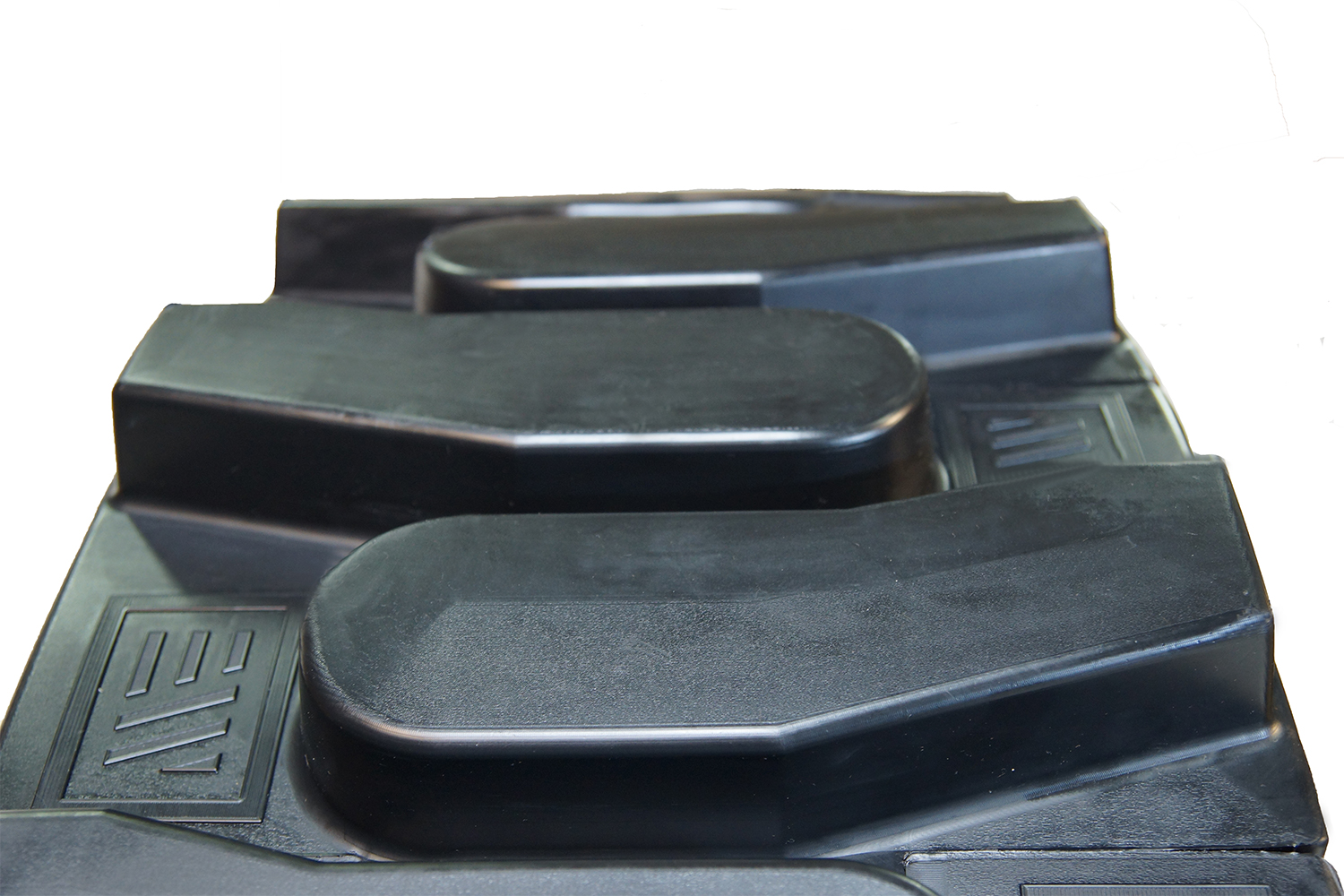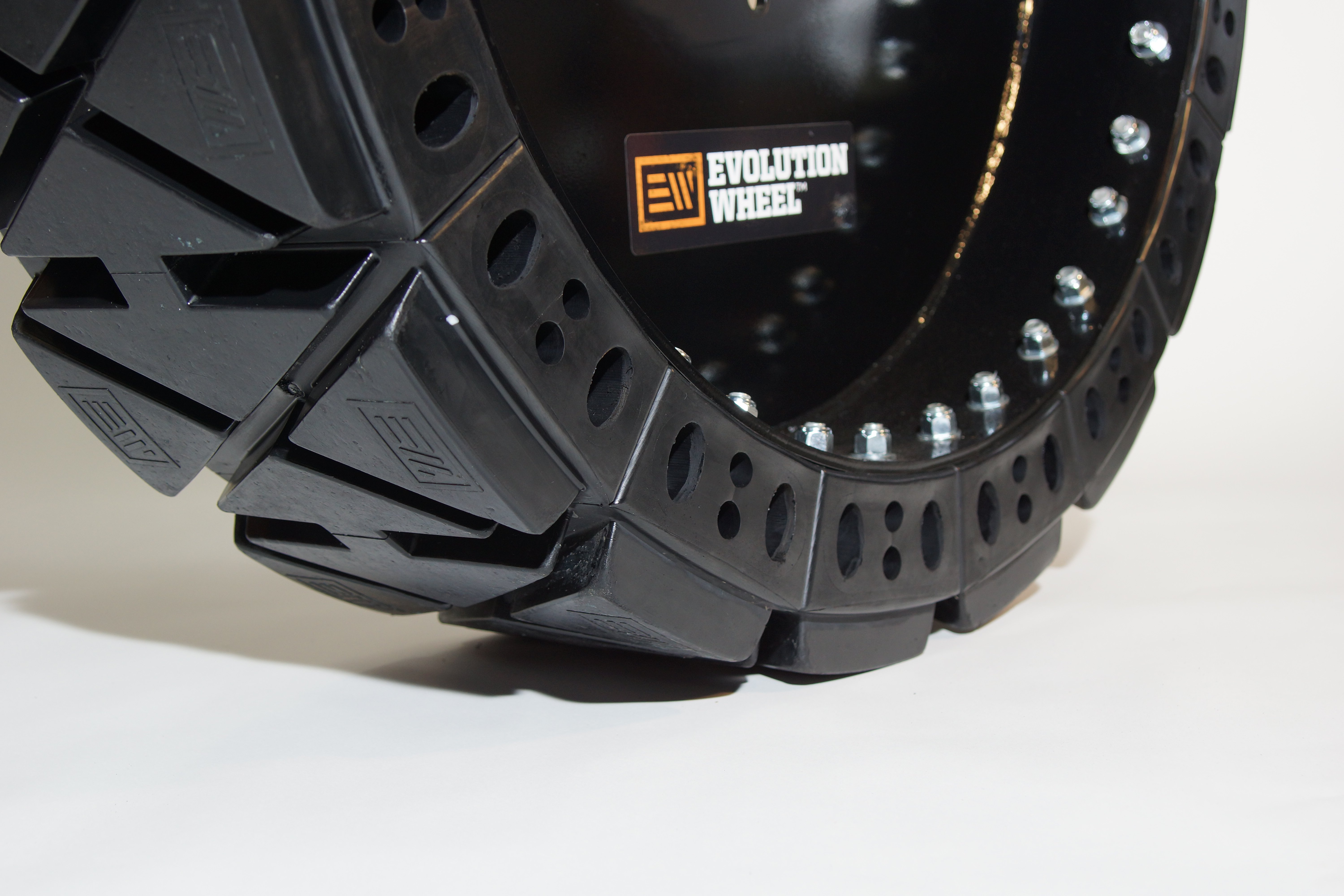Manitou Solid Telehandler Tire
Is your telehandler ready for and upgrade? Evolution wheel offers a full line of Manitou Solid telehandler tire to meet your needs.
EWRS-TH SERIES
The EWRS-TH series of manitou solid telehandler tire were designed to meet the needs of today's job site demands. We came up with a way to offer you serviceability, traction and maximum stability all in one!
Our EWRS-TH series of manitou solid telehandler tire is available in your choice of an all terrain (AT) or hard surface (HS) tread pattern to match with your specific application that will ensure optimal traction and increased wear life.
How many pneumatic or foam filled manitou solid telehandler tire have you had to change on your jobsite because of damage or sidewall gashes? With health and safety being as important as it is today a serviceable option was needed. Our team of engineers developed our EWRS-TH series of manitou solid telehandler tire to be easily repaired if damaged, although we are not sure you will need to with the quality that went into our design and components.
With serviceable tire sections, the need for a service truck and specialized technicians is all but eliminated. We have reduced your service tooling down to only a 15/16" wrench in your operator's back pocket and repair parts are readily available in your nearest onsite storage container or in the toolbox of your pickup.
manitou solid telehandler tire work under a variety of conditions but one thing remains the same, safety is paramount. For this reason, we designed our EWRS-TH series of manitou solid telehandler tire with maximum stability and load bearing capacity. A combination of our specially engineered core hole design and bidirectional tread pattern provide a very consistent and predictable loading profile.
To learn more about the EWRS-TH series of manitou solid telehandler tire, give us a call or submit a quote request to speak with one of our product specialists. We will match the right tire to your specific jobsite needs.
| Actual Tire Dimensions | |||||||
|---|---|---|---|---|---|---|---|
| Tire Size | Overall Diameter | Width | Rim Diameter | Wearable Tread Depth | Weight | Load Rating (5MPH) | Load Rating (20MPH) |
| ----- | Inch (mm) | Inch (mm) | Inch (mm) | 32nd (mm) | lb (kg) | lb (kg) | lb (kg) |
| 14x24 | 52" | 14" | 41" | 52 | 850 lb | 18,750 lb | 9,000 lb |
| 52X14-40 | (1321) | (356) | (1041) | (42) | (386 kg) | (8,523 kg) | 4,091 kg |
Telehandler Tires: Solid vs Foam Filled
Telehandlers, also known as telescopic handlers or telescoping forklifts, need to operate in a variety of conditions. Some of these conditions can be brutal on a tire, often leading to punctures. When you are on a job site, the last thing you want to do is delay your team as you deal with costly and time-consuming tire repairs. There are two popular options for preventing tire punctures, foam-filled pneumatic tires and solid tires. In this blog, we'll go over the differences between foam filled tires and solid tires so that you'll be able to decide which style of tire is best for your telehandler.
Foam-Filled
Foam-filled tires are conventional pneumatic tires that have been filled with foam instead of air. This means that a puncture does not cause a loss of filler. With no loss of filler, your tire does not go flat immediately, and your telehandler stays on the job, saving you time and money.
This added piece of mind does not come without a cost, however. Foam filled tires adds a lot of weight to the drivetrain of your telehandler. This added weight puts more stress on your telehandler and can result in greater wear and tear on the machine. In addition to greater maintenance costs, you'll also increase the chance that your machine breaks down when you need it.
The added weight of the tires will have an effect on traction as well. Although the added weight may increase traction on some surfaces, often it will do the opposite because in addition to getting heavier, foam-filled tires are also much stiffer. Operators of telehandlers with foam-filled tires often report decreased traction. The extra stiffness also results in a rougher ride for those operators, which could be a big problem depending on the terrain that your telehandler operates on.
One other downside to foam-filled tires comes when it is time to replace them. Foam tires take a long time to fill and must be cut off the rim when it is time to change them. All of this results in increased downtime for your telehandler when the tires are being replaced.
Solid Tires
Solid tires cannot go flat because they are solid rubber. Although they do add some extra weight to the machine compared to air-filled tires, they add much less weight than foam-filled tires do. This gives you the puncture resistance with less wear and tear on the telehandler. Although they can be more expensive than foam-filled tires, solid tires have a better wear life, which means you'll spend less time replacing them.
Segmented Solid Tires
Another option for a solid tire option is segmented solid tires, which provide an even greater economic benefit. Segmented solid tires allow you to replace a single section of the tire, without even removing the tire from the telehandler. Using this type of solid tire will dramatically decrease the downtime of your machine compared to other tire choices.
Like foam-filled tires, solid tires can sometimes result in a stiffer ride and reduced. However, solid tires have aperture holes built into them that absorb some of the shock and help improve traction. Advancements in aperture hole design and rubber compounds have made it possible for solid tires to perform compare more favourably to air-filled tires than they have in the past.
Conclusion
Evolution Wheel has a range of premium segmented solid tires for a wide variety of applications. Optimizing the benefits of solid tires means matching the tire design to the needs of your equipment. If you think that solid tires are the right choice for your telehandler, feel free to contact us today for more information on which of our tires will best fit your needs.
